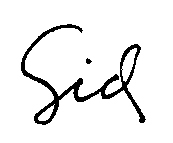Make it up on Volume!
(Theoretically, you can do almost anything, but certainly not this.)
by Sid Raisch

We were brainwashed.
I was, you were, and all your associates and customers were brainwashed. We were misled to believe, that things are different than they are. Until fifth grade we’re all relatively unfiltered. We receive information with little judgement.
In fifth grade the curriculum starts to incorporate socioeconomics. This is meant to be a good thing, to educate us to become good consumers. We learned two economic principles, but only two, and in this case, two is far from enough.
One of the two things everyone who’s finished fifth grade learned was “Gross Profit”, which is the difference between the selling price, and the cost of goods of a product. This is better defined as Gross Margin, expressed in both dollars, and percent. The term Gross Profit implies that there is profit, which as you know, may or not be true. Moreover, it implies that Gross Profit is ALL profit, which as you know, is nowhere near the truth. It explains why new employees often believe (whether we know it or not), that half the money coming into the business goes home with the owners.
We were probably also taught, and didn’t actually learn, that Gross Profit includes operating expenses as well as profit. Why we didn’t learn that part is a mystery, probably having something to do with being wide-eyed about how much money company owners make from our purchases, or maybe it was just that our attention span was exceeded by that time? Either way, we’ve got it wrong, and we’re not alone. It’s easier to brainwash a kid, but brainwashing doesn’t end when fifth grade is over. As large as they are, Quickbooks still today reinforces our incorrect perception of profit by using the term Gross Profit in their P&L Statement. Yes, technically they are right, but it is misleading, isn’t it?
The second socio-economic principle we were taught in fifth grade is that you can “make it up on volume”. We learned that when companies produce more of their product the economies of scale kick in lowering the incremental costs of making more of the product, which allows the price to be lowered, making it affordable for more people to buy, thereby increasing demand and sales. This is only partially true. What we weren’t taught was the distinction there are macro-economic and micro-economic principles. This is an error of omission, and in my opinion, a national tragedy. You may think I’m overstating that but look at our deficit and tell me I’m wrong. The reality is that economy of scale is a macro-economic principle that doesn’t work in micro-economic environments – like with our relatively smaller businesses. In fact, the opposite of economy of scale occurs and small companies not only can’t make up anything with volume, they need to charge more for the extra costs of handling smaller volumes.
How do you get paid more for smaller volume? It’s simple, and with all things simple, it is better, but not easy. The answer is that you must earn more by creating a greater margin difference, by offering greater value. Since perception is reality, this can at least partially be accomplished by increasing the perception of greater value.
How do you create greater perceived value? There are three ways:
- Product or Service – sell a different product or service or position it as being different in such a way that it cannot be compared by price with any other.
- Environment – create a physical environment that stimulates the perception that the product or service is worth more. Better lighting is one technique and example of adding value with a better selling environment.
- Service – an extension (broadening) of a product or service is the way it is serviced. For example, a planting service has greater value by adding prior notification by phone, email, text, Messenger, or whatever communication means that you and your customer agree to, so they are reminded that you’re coming. In your store an added perceived value service is a sparkling clean, tidy, and attractive restroom.
How do you get paid for providing the greater perceived value required to be able to charge more to make up for your lower volume?
This is a simple answer, maybe too simple for you to accept, but let’s try. You charge for it in your price.
Yes, it’s not only that simple, it is the only way you will be paid enough to earn a profit, especially a Best Practices, or Exceptional Practices profit. Exactly how you raise your price has a lot to do with how you present your product or service, and how you get your price – something specifically that I help clients with individually.
While you can’t make up for a lower price, or anything else with greater volume (only with greater real and perceived value), you may be able to increase volume of transactions, products and total sales, while losing money in the process. And that’s another article for next time.
Raise your bar with greater perceived value – and charge more for it!


I’m here for you. Text or call me now while you’re in the mood to Raise the Bar by becoming Exceptionally Exceptional.
